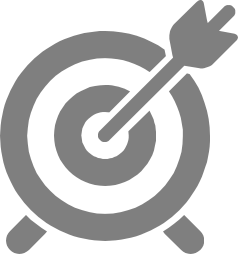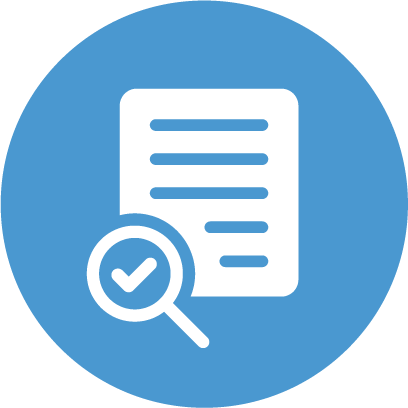
For example, computational tools can be a powerful way to collect data because they provide an opportunity to collect data more often, more efficiently, and/or more accurately than a human can. Computational data analysis allows us to manipulate large, rich data sets to identify relationships. Computational tools are also an effective way to communicate data about an argument or idea to a wide range of audiences. These data practices are essential components of learning activities for students as they make sense of scientific phenomenon.
We have identified the following four sub-practices of working with data:
Explore the resources below to consider how to integrate computational thinking data practices in your classroom.
Learn how our partner Jessica Bibbs-Fox, a teacher in Compton Unified School District, transformed the COVID-19 pandemic into an authentic, project-based learning experience that integrated computational thinking data practices into her virtual middle school science class. Read more.

“I built this project around the current phenomena COVID-19 and I wanted my students to be able to actually look at what was being produced on our different news outlets and really look at whether it was valid or not.” – Jessica Bibbs-Fox
Our partner Susan Meija, a teacher in Broward County Public Schools, designed an authentic, project-based learning experience exploring the effects of micro-plastics on aquatic ecosystems while integrating computational thinking data practices into her middle school science class. By contaminating saltwater aquariums with plastic, Susan and her students studied the impact of plastic waste by collecting data on the amount of light blocked by different types of plastic and the changes in the pH of each saltwater environment.
 “We collected data and measured it on a daily basis. By putting the data in CODAP they can see how it can be manipulated by the variables. You can compare all of the graphs together in one or individually and they were able to make better comparisons and analyze it.” – Susan Mejia
“We collected data and measured it on a daily basis. By putting the data in CODAP they can see how it can be manipulated by the variables. You can compare all of the graphs together in one or individually and they were able to make better comparisons and analyze it.” – Susan Mejia
![]()
Teachers will know students are engaging in computational thinking data practices because they may observe the following student actions:
Collecting Data
Analyzing Data
Evaluating Data
Communicating Data

Ask students to engage in computational thinking data practices and/or reflect on their process or progress with these prompting questions:
![]()
Explore examples of middle school science activities integrated with computational thinking practices. Although the examples are topic-specific, templates are available for you to design opportunities in different topics or contexts.
In this example, a student explored a question about the novel coronavirus using existing data. Explore the resource to see how the student analyzed and evaluated the dataset to answer a driving question.
Want to do something like this in your classroom? Use or adapt this template as a resource to design opportunities for your students to collect, analyze, and evaluate data.
In this example, a student created an infographic to communicate a data-based claim about the novel coronavirus to a particular audience. Explore the resource to see how the student created a data visualization specific to the users’ needs.
Want to do something like this in your classroom? Use or adapt this template as a resource to design opportunities for your students to communicate data.

The following rubrics outline components of each computational thinking data practice that can be utilized to assess student work.
| "Yes" | "Almost" | "Not Yet" | |
|---|---|---|---|
|
Designing an investigation |
Describe in detail the investigation that you have chosen, including the testable question, data to be collected, and the computational tool used to gather, record, and report the data. |
Provides general information but insufficient details needed to describe the investigation. |
Does not describe the investigation, data to be collected, and the computational tool used to gather, record, and report the data. |
|
Collecting data |
Describes in detail the data to be collected in the investigation and how that data will inform the question. |
Provides general information but is insufficient in details about the data to be collected. |
Does not describe the data to be collected. |
|
Using computational tools |
Describes in detail how the computational tool will be used to gather, record, and report the data. Includes frequency of data collection, method of recording data, and how the data was reported. |
Provides general information but is insufficient in details about the computational tool used to gather, record, and report the data. |
Does not describe the computational tool used to gather, record, and report the data OR the tool described is not computational. |
|
Data |
Provides a complete set of data points for the investigation with a minimum of 20 data entries. |
Provides an incomplete report of data points needed for the investigation; less than 20 data entries but more than 10. |
Provides an incomplete report of data points needed for the investigation; provided |
|
Reflection |
Provides detailed reflection on how the computational tool benefitted/hindered the investigation and possible changes needed in the collection of data, and any further data needed to inform the investigation |
Provides general reflection on how the computational tool benefitted/hindered the investigation OR possible changes needed in the collection of data, and any further data needed to inform the investigation. |
Provides brief/missing reflection on how the computational tool benefitted/hindered the investigation AND possible changes needed in the collection of data, and any further data needed to inform the investigation. |
|
Designing an investigation |
|
| "Yes" |
Describe in detail the investigation that you have chosen, including the testable question, data to be collected, and the computational tool used to gather, record, and report the data. |
| "Almost" |
Provides general information but insufficient details needed to describe the investigation. |
| "Not Yet" |
Does not describe the investigation, data to be collected, and the computational tool used to gather, record, and report the data. |
|
Collecting data |
|
| "Yes" |
Describes in detail the data to be collected in the investigation and how that data will inform the question. |
| "Almost" |
Provides general information but is insufficient in details about the data to be collected. |
| "Not Yet" |
Does not describe the data to be collected. |
|
Using computational tools |
|
| "Yes" |
Describes in detail how the computational tool will be used to gather, record, and report the data. Includes frequency of data collection, method of recording data, and how the data was reported. |
| "Almost" |
Provides general information but is insufficient in details about the computational tool used to gather, record, and report the data. |
| "Not Yet" |
Does not describe the computational tool used to gather, record, and report the data OR the tool described is not computational. |
|
Data |
|
| "Yes" |
Provides a complete set of data points for the investigation with a minimum of 20 data entries. |
| "Almost" |
Provides an incomplete report of data points needed for the investigation; less than 20 data entries but more than 10. |
| "Not Yet" |
Provides an incomplete report of data points needed for the investigation; provided |
|
Reflection |
|
| "Yes" |
Provides detailed reflection on how the computational tool benefitted/hindered the investigation and possible changes needed in the collection of data, and any further data needed to inform the investigation |
| "Almost" |
Provides general reflection on how the computational tool benefitted/hindered the investigation OR possible changes needed in the collection of data, and any further data needed to inform the investigation. |
| "Not Yet" |
Provides brief/missing reflection on how the computational tool benefitted/hindered the investigation AND possible changes needed in the collection of data, and any further data needed to inform the investigation. |
| "Yes" | "Almost" | "Not Yet" | |
|---|---|---|---|
|
Data set and question description |
Describes in detail the data set that you have chosen, type of data that is present, and the question you identified to explore. |
Provides general information but is insufficient in details needed to describe the data set, type of data that is present, and the question you identified to explore. |
Does not describe the data set, type of data that is present, and the question you identified to explore. |
|
Spreadsheet |
Provides a spreadsheet with a minimum of 20 data points.The spreadsheet includes appropriate labels and titles to inform the reader of what data is present. |
Provides general information but is insufficient in details needed to describe the data set, type of data that is present, and the question you identified to explore. |
Provides a spreadsheet with less than 10 data points. The spreadsheet is missing labels/titles to inform the reader of what data is presented. |
|
Data Organization |
Data is organized to assist in the analysis of the data set. |
Some of the data is organized but does not assist in analysis of the data set. |
Data set is not organized. |
|
Explanation |
Provides thorough description of the method used to organize the data within the spreadsheet and identifies relationships between variables. |
Provides general information, but insufficient details needed to describe the method used to organize the data within the spreadsheet or any relationships that were identified. |
Does not describe the method used to organize the data within the spreadsheet or any relationships that were identified. |
|
Reflection |
Response includes thoughtful and relevant reflections of data analysis, which may include posing questions about the relationship, identifying additional data to inform analysis, and/or explaining unusual findings from the analysis. |
Response includes general but insufficient details of data analysis, which may include posing questions about the relationship, identifying additional data to inform analysis, and/or explaining unusual findings from the analysis. |
Response does not reflect upon data analysis or provide relevant details. |
|
Data set and question description |
|
| "Yes" |
Describes in detail the data set that you have chosen, type of data that is present, and the question you identified to explore. |
| "Almost" |
Provides general information but is insufficient in details needed to describe the data set, type of data that is present, and the question you identified to explore. |
| "Not Yet" |
Does not describe the data set, type of data that is present, and the question you identified to explore. |
|
Spreadsheet |
|
| "Yes" |
Provides a spreadsheet with a minimum of 20 data points.The spreadsheet includes appropriate labels and titles to inform the reader of what data is present. |
| "Almost" |
Provides general information but is insufficient in details needed to describe the data set, type of data that is present, and the question you identified to explore. |
| "Not Yet" |
Provides a spreadsheet with less than 10 data points. The spreadsheet is missing labels/titles to inform the reader of what data is presented. |
|
Data Organization |
|
| "Yes" |
Data is organized to assist in the analysis of the data set. |
| "Almost" |
Some of the data is organized but does not assist in analysis of the data set. |
| "Not Yet" |
Data set is not organized. |
|
Explanation |
|
| "Yes" |
Provides thorough description of the method used to organize the data within the spreadsheet and identifies relationships between variables. |
| "Almost" |
Provides general information, but insufficient details needed to describe the method used to organize the data within the spreadsheet or any relationships that were identified. |
| "Not Yet" |
Does not describe the method used to organize the data within the spreadsheet or any relationships that were identified. |
|
Reflection |
|
| "Yes" |
Response includes thoughtful and relevant reflections of data analysis, which may include posing questions about the relationship, identifying additional data to inform analysis, and/or explaining unusual findings from the analysis. |
| "Almost" |
Response includes general but insufficient details of data analysis, which may include posing questions about the relationship, identifying additional data to inform analysis, and/or explaining unusual findings from the analysis. |
| "Not Yet" |
Response does not reflect upon data analysis or provide relevant details. |
| "Yes" | "Not Yet" | |
|---|---|---|
|
Data set description |
Describes in detail the dataset and the overall meaning. |
Does not describe the dataset and/or the overall meaning. |
|
Bias |
Provides a thorough description of the source of the data and identifies interests or bias that the source may have. |
Provides insufficient description of the source of the data and identified interests or bias that the source may have. |
|
Measurement errors |
Provides thorough description of how the data was collected and potential measurement errors. |
Provides insufficient description of how the data was collected and potential measurement errors. |
|
Excluded data |
Describes in detail data that could have been excluded from this dataset. |
Provides insufficient description of data that could have been excluded from this dataset. |
|
Implications |
Provides detailed narrative describing how bias, error, or exclusions could have changed the meaning or findings from this dataset. |
Provides insufficient details describing how bias, error, or exclusions could have changed the meaning or findings from this dataset. |
|
Data set description |
|
| "Yes" |
Describes in detail the dataset and the overall meaning. |
| "Not Yet" |
Does not describe the dataset and/or the overall meaning. |
|
Bias |
|
| "Yes" |
Provides a thorough description of the source of the data and identifies interests or bias that the source may have. |
| "Not Yet" |
Provides insufficient description of the source of the data and identified interests or bias that the source may have. |
|
Measurement errors |
|
| "Yes" |
Provides thorough description of how the data was collected and potential measurement errors. |
| "Not Yet" |
Provides insufficient description of how the data was collected and potential measurement errors. |
|
Excluded data |
|
| "Yes" |
Describes in detail data that could have been excluded from this dataset. |
| "Not Yet" |
Provides insufficient description of data that could have been excluded from this dataset. |
|
Implications |
|
| "Yes" |
Provides detailed narrative describing how bias, error, or exclusions could have changed the meaning or findings from this dataset. |
| "Not Yet" |
Provides insufficient details describing how bias, error, or exclusions could have changed the meaning or findings from this dataset. |
| "Yes" | "Not Yet" | |
|---|---|---|
|
Data set description |
Describes in detail the data set that you have chosen. |
Provides insufficient details to describe the data set. |
|
Audience Demographic |
Describes in detail the audience to which you will be presenting the information and why. Description includes at least three key demographic details. |
Does not describe the intended audience and why. Description includes less than three key demographic details. |
|
Representation |
Provides visual representation for the selected data set. Includes appropriate labels, keys, and design elements for interpretation. |
Does not provide a visual representation for the selected data set and/or include insufficient labels, keys, and design elements for interpretation. |
|
Message of Visualization |
Describes the message of the visualization and how it relates to the meaning of the overall dataset. |
Provides an insufficient description of the message of the visualization and/or how it relates to the meaning of the overall dataset. |
|
Design of Representation for Target Audience |
Describes in detail how the chosen design will aid the target audience in interpreting the data set. |
Provides an insufficient description of how the chosen design will aid the target audience in interpreting the data set. |
|
Data set description |
|
| "Yes" |
Describes in detail the data set that you have chosen. |
| "Not Yet" |
Provides insufficient details to describe the data set. |
|
Audience Demographic |
|
| "Yes" |
Describes in detail the audience to which you will be presenting the information and why. Description includes at least three key demographic details. |
| "Not Yet" |
Does not describe the intended audience and why. Description includes less than three key demographic details. |
|
Representation |
|
| "Yes" |
Provides visual representation for the selected data set. Includes appropriate labels, keys, and design elements for interpretation. |
| "Not Yet" |
Does not provide a visual representation for the selected data set and/or include insufficient labels, keys, and design elements for interpretation. |
|
Message of Visualization |
|
| "Yes" |
Describes the message of the visualization and how it relates to the meaning of the overall dataset. |
| "Not Yet" |
Provides an insufficient description of the message of the visualization and/or how it relates to the meaning of the overall dataset. |
|
Design of Representation for Target Audience |
|
| "Yes" |
Describes in detail how the chosen design will aid the target audience in interpreting the data set. |
| "Not Yet" |
Provides an insufficient description of how the chosen design will aid the target audience in interpreting the data set. |
![]()
Explore this curated list of supports to implement, explore, and promote computational thinking practices in your classroom.
Data sets for analyzing data:
Platforms for analyzing data:
Platforms for creating data visualization:
Platforms for exploring data visualization:

We want to hear from you!
Please take this 5-minute survey and help us serve you better.
